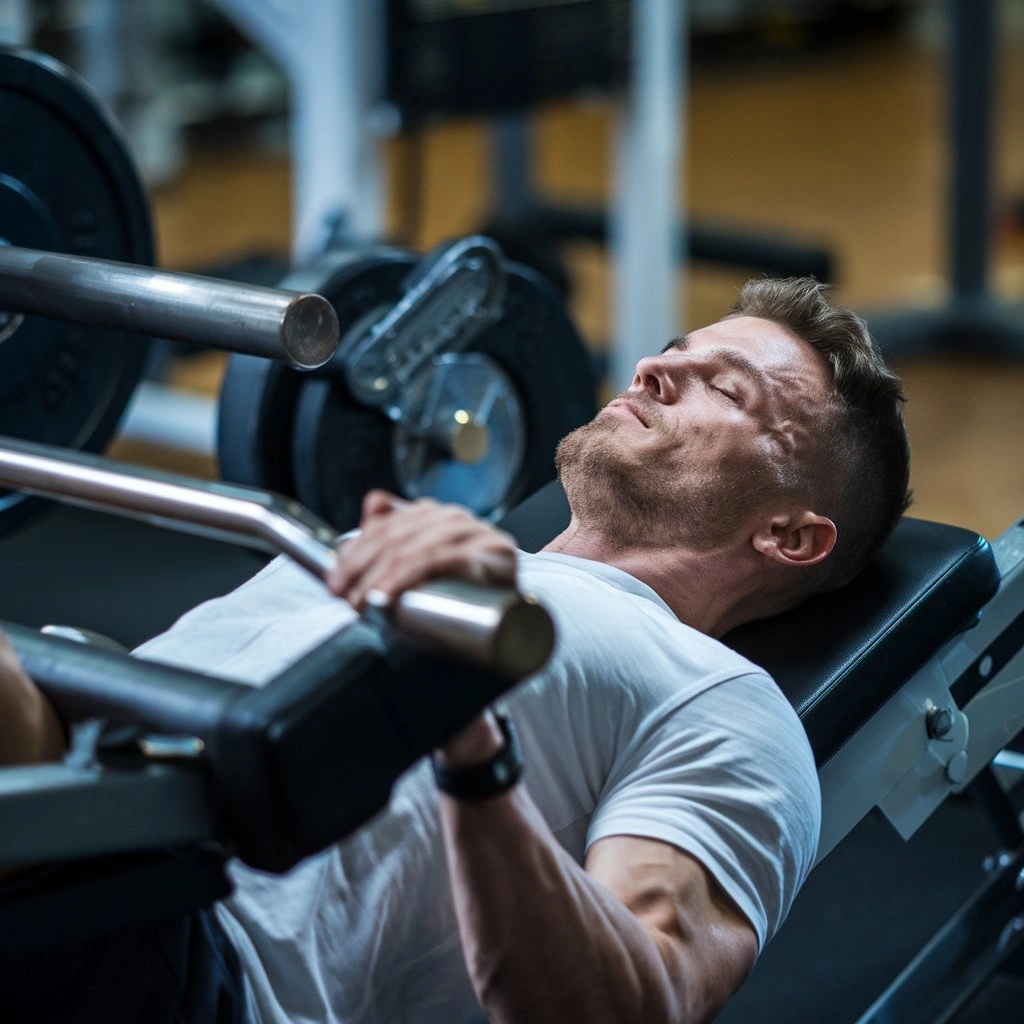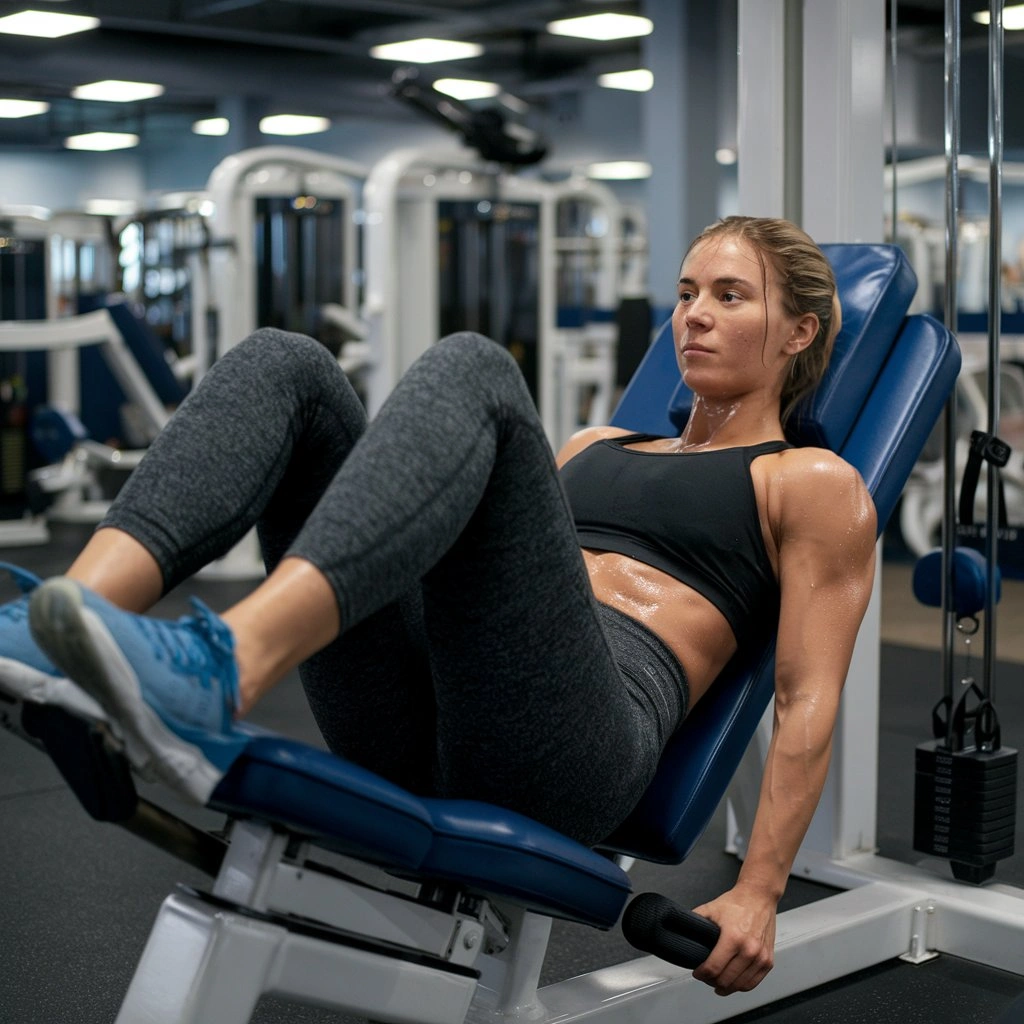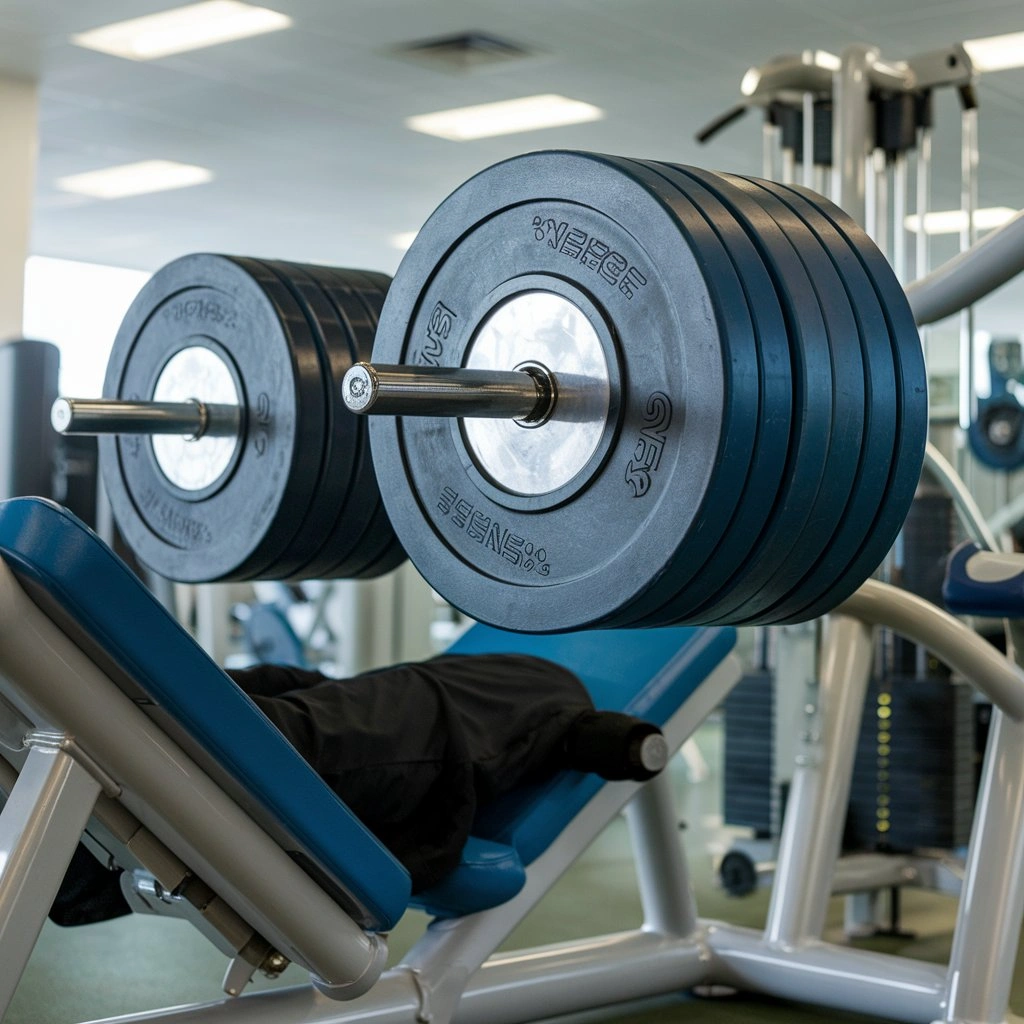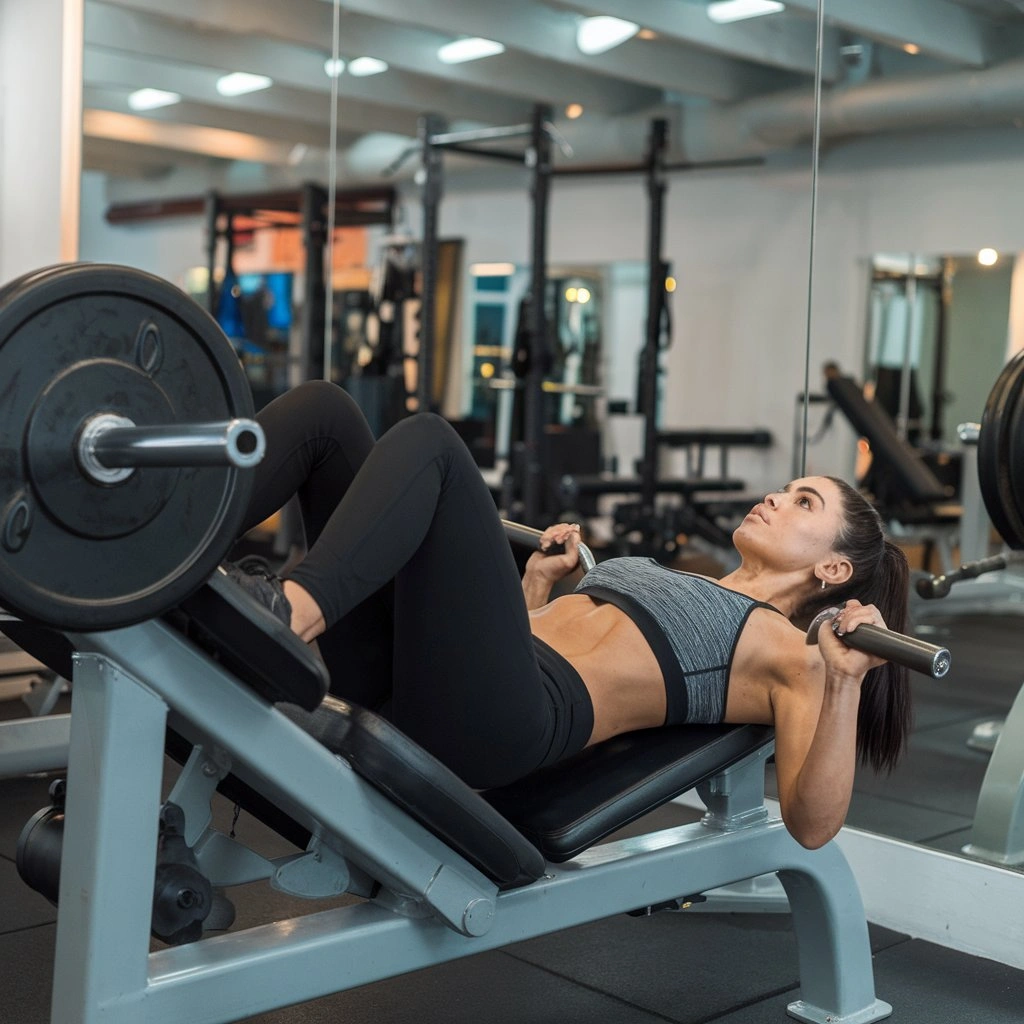Ever wondered about those cool machines at the gym? People use them to push weights with their legs while lying down. That’s the lying leg press machine. It’s a very useful piece of equipment for building strong, toned legs!
Imagine your legs are the pillars holding up your body. Strong legs help you walk, run, jump, climb stairs, and pretty much anything that gets you moving. The Leg Press Machine lies. It’s like a personal trainer for your legs. It helps them get stronger.
But what exactly is this machine, and why should you use it? Let’s dive in and explore the wonderful world of leg pressing!
A Machine Made for Leg Power
The lying leg press machine looks a bit like a comfy chair with a platform for your feet. You sit down, lean back, and then push the platform away with your legs. It’s kind of like doing squats but with more support and control.
The machine usually has a weight stack or plates that you can adjust to make the pushing harder or easier. This way, you can start light and increase the weight as your legs get stronger.
 Benefits Galore: Why You Should Leg Press
Benefits Galore: Why You Should Leg Press
There are many reasons why the lying leg press machine is a popular choice at the gym. Here are some of the cool things it can do for you:
- Builds Strong Quads: Your quads are the muscles at the front of your thighs. They’re the ones that help you straighten your legs when you kick or jump. The leg press machine lies. It gives your quads a great workout. This makes them stronger and more defined.
- Boosts Hamstrings: The hamstrings are the muscles at the back of your thighs. They help you bend your knees and keep your balance. The leg press machine can also help. It strengthens your hamstrings when used in proper form.
- Targets Your Glutes: Your glutes are the big muscles in your buttocks. Strong glutes are important for overall lower body strength and stability. By moving your feet on the platform, you can target your glutes more with the leg press.
- Great for Beginners: Learning proper squat form can be tricky. The leg press machine offers a safe and controlled way to work your legs. It’s perfect for beginners or anyone recovering from injuries.
- Tailored Workouts: The adjustable weight lets you customize your workout. You can do it based on your fitness level. You can go light for toning or push yourself with heavier weights to build serious muscle.
Description of the lying leg press machine
The leg press machine might seem simple. But, it’s packed with features that make Leg Workouts safe and efficient. Let’s break down its key parts:
Structure and Components
- Seat and Backrest: This comfy chair-like area is where you sit and lean back during the exercise. The backrest usually adjusts to different angles for a personalized fit.
- Foot Platform: This wide, flat platform is where you place your feet to push the weight. It may have a textured surface for better grip.
- Weight Stack or Plate Holders: Here you add weight plates or select from a weight stack. The heavier the weight, the harder the leg press.
- Guide Rods and Carriage: These strong metal rods hold a carriage. The carriage slides smoothly back and forth. The foot platform is attached to the carriage, allowing it to move when you push.
Adjustability Options
- Seat Backrest Angle: You can adjust most machines to a backrest angle. The angle should feel comfortable and support your lower back.
- Starting Position: Some machines have adjustable foot platform starting positions. This lets you choose where your knees are bent at the beginning of the exercise.
- Weight Selection: Choose the Weight: You can add weight plates. Or, adjust the weight stack to match your strength and workout goals.
Safety Features
- Safety Catches: These are adjustable bars located on either side of the carriage. You can set them at a comfortable height to stop the weight if you can’t complete a rep. This prevents the weight from crushing your legs.
- Foot Straps: Some machines have foot straps. They secure your feet on the platform to stop slipping.
- Non-Slip Pads: Non-slip pads are on the seat and backrest. They keep you from slipping while pushing the weight.
 How to Use the Lying Leg Press Machine
How to Use the Lying Leg Press Machine
The leg press machine is a great tool. But, using it right is key. It maximizes results and prevents injuries. Here’s how to become a leg press pro:
Proper Setup and Positioning
- Adjust the Seat: Sit on the machine and set the backrest to an angle that supports your lower back. Your feet should be flat on the platform when your knees are bent at a 90-degree angle.
- Position Your Feet: Place your feet shoulder-width apart on the platform. Experiment with slightly different foot placements to target different leg muscles. A wider stance hits your outer quads, while closer together emphasizes the inner quads.
- Secure Yourself: If your machine has foot straps, use them. They keep your feet firmly on the platform. This gives you better control and stability.
- Choose Your Weight: Start with a weight that lets you do 10-12 reps with good form. You should feel challenged but not strained.
Leg Pressing Like a Champion
- Engage Your Core: Before you start pushing, tighten your abdominal muscles. This will help stabilize your spine and prevent injuries.
- Push with Your Heels: Push with Your Heels. As you exhale, slowly press the platform away with your heels. Focus on pushing through your whole foot. Don’t just use your toes!
- Full Range of Motion: Use the full range of motion. Extend your legs almost straight, but don’t lock your knees. Then, slowly lower the weight back down to the starting position while inhaling.
- Control the Movement: Don’t slam the weight down at the bottom or bounce at the top. Maintain control throughout the entire movement for a safer and more effective workout.
Common Mistakes to Avoid
- Lifting Your Back: Lifting Your Back: Keep your lower back against the backrest the whole time. Don’t arch your back to lift the weight. This can strain your spine.
- Using Too Much Weight: It’s tempting to go heavy, but proper form is more important. Choose a weight that allows you to maintain good form throughout your reps.
- Locking Your Knees: Fully extending your legs is okay, but avoid locking your knees. This can put unnecessary stress on your knee joints.
- Uncontrolled Movement: Don’t jerk the weight or let it drop quickly. Move slowly and with control for a safer and more efficient workout.
Muscles targeted by the lying leg press machine
The leg press machine doesn’t just build big legs. It works many muscles and strengthens your lower body well. Here’s a breakdown of the muscles you’ll be engaging:
Primary Power Players
- Quads (Quadriceps): These are the big guys on the front of your thighs. They’re the primary muscles responsible for pushing the weight during the leg press. As you extend your legs, your quads contract. This builds strength and definition.
- Glutes (Gluteus Maximus): Your glutes are the large muscles in your buttocks. While not the main mover, the leg press definitely gets your glutes involved. They help extend your hips as you push the weight. This adds to your leg power and stability.
Secondary Supporters
- Hamstrings: These muscles run along the back of your thighs. The leg press primarily targets the quads. But, proper form also works your hamstrings. They help flex your knees as you lower the weight.
- Calves: Calves are in your lower legs. They play a small role in stabilizing your foot and pushing the weight during the leg press.
Foot Placement Finesse
By adjusting your foot placement on the platform, you can shift the emphasis a bit. You can shift it between your quads and glutes.
- Standard Shoulder-Width Stance: This is the most common position. It works both the quads and glutes evenly.
- Wider Stance: Place your feet wider than shoulder-width apart. This puts more emphasis on the outer quads. It helps to sculpt those outer thigh muscles.
- Narrower Stance: A narrower stance means bringing your feet closer together. This targets the inner quads more. It gives your whole quadriceps a well-rounded workout.
 Variations and modifications
Variations and modifications
The lying leg press machine is a versatile tool, but who says your workouts have to be routine? Here are some changes to keep your leg workouts interesting and challenging. They are variations and modifications.
Foot Placement Variations
As mentioned earlier, foot placement can change which muscles are emphasized:
- Wide Stance: A Wide Stance targets your outer quads. Place your feet wider than shoulder-width apart on the platform. This is great for sculpting those sculpted outer thigh muscles.
- Narrow Stance: Bring your feet closer together to focus more on your inner quads. This variation helps develop a well-rounded quad workout.
- Toe-Up Position: Put your toes higher on the platform. This shifts some emphasis to your calves, giving them a little extra burn.
One-Legged Leg Press
Ready for a challenge? Try the one-legged leg press! Here’s how
- Complete the setup as usual, but secure only one foot on the platform.
- Extend that leg fully, pushing the weight with control.
- Lower the weight back down slowly and repeat with the other leg.
This variation requires more core stability and balance. It’s a great way to increase difficulty and target each leg.
Resistance Adjustments
Don’t be limited to just adding weight plates! Here are some ways to adjust resistance for a more dynamic workout:
- Slow Tempo: Instead of pushing the weight quickly, try slowing down the movement. This increases time under tension on the muscles, leading to greater strength gains.
- Partial Reps: Don’t fully extend your legs at the top. Perform shorter, controlled reps through a partial range of motion. This can help target specific weaknesses or add variety to your sets.
- Pause at the Top: After straightening your legs, hold the weight briefly at the top. Then, lower it down. This isometric contraction adds an extra challenge to your workout.
Benefits of using the lying leg press machine
 The leg press machine is not just another gym friend. It’s a powerhouse tool for building strong, sculpted legs. Here’s a recap of the incredible benefits it offers:
The leg press machine is not just another gym friend. It’s a powerhouse tool for building strong, sculpted legs. Here’s a recap of the incredible benefits it offers:
Strengthens Lower Body Muscles
- Quad Powerhouse: The leg press targets your quads. Those are the muscles on the front of your thighs. As you push the weight, your quads contract powerfully, building strength and definition that will help you with everything from walking to jumping.
- Glute Engagement: Don’t underestimate your glutes! While not the primary mover, the leg press gets your glutes involved, helping them become stronger and more stable. This translates to better overall lower body power and improved athletic performance.
- Secondary Support: Even your hamstrings and calves get some love! The leg press engages these muscles in a supportive role, helping with knee flexion and foot stability, contributing to a well-rounded lower-body workout.
Provides a Safe and Controlled Workout Environment
- Supported Stability: Unlike weights squats, the lying leg press machine provides back and leg support. This makes it a safer option for beginners or those recovering from injuries. You can focus on pushing the weight without worrying about balance or core engagement as much.
- Controlled Movement: The machine guides the movement of the weight, minimizing the risk of form breakdowns that can lead to injuries. You can focus on controlled reps throughout the entire exercise, maximizing muscle engagement and minimizing strain.
- Adjustable Intensity: The weight selection allows you to tailor the exercise to your fitness level. Start light and gradually increase weight as you get stronger, ensuring a safe and progressive workout experience.
Suitable for Beginners and Advanced Athletes Like
- Beginner-Friendly Foundation: The lying leg press machine offers a safe and controlled way to learn proper leg pressing form. This makes it a perfect starting point for anyone new to strength training.
- Scalable Challenge: Don’t be fooled by the support! As you get stronger, you can increase the weight, try advanced techniques like one-legged presses, or explore different foot placements to keep challenging your muscles.
- Complementary Training: Even seasoned athletes can benefit from the lying leg press. It’s a great way to isolate and strengthen specific leg muscles, complementing other leg exercises and helping you reach your fitness goals. pen_spark
Precautions and considerations
The lying leg press machine is a fantastic tool, but like any exercise equipment, it’s important to prioritize safety. Here are some key precautions and considerations to keep in mind:
Consulting a Fitness Professional
- Guidance for Beginners: Especially for beginners, consulting a certified personal trainer is highly recommended. They can guide you on proper form, weight selection, and safe execution of the exercise to maximize results and prevent injuries.
- Pre-existing Conditions: If you have any pre-existing health conditions, especially back or knee problems, talk to your doctor before using the leg press machine. They can advise you on whether it’s suitable or if any modifications are necessary.
Avoiding Overload
- Start Light, Go Heavy Gradually: It’s tempting to push your limits, but it’s wiser to start with a weight that allows you to maintain good form throughout your reps. Gradually increase the weight as you get stronger to avoid overloading your muscles and joints.
- Respect the Machine’s Limits: Every machine has a weight capacity. Don’t try to add more weight than the machine is designed to handle. This can damage the equipment and put you at risk of injury.
Listen to Your Body
- Pain is a Signal: If you experience any pain during the exercise, stop immediately. Pain is your body’s way of telling you something is wrong. Reduce the weight, adjust your form, or take a break.
- Don’t Force It: Everyone progresses at their own pace. Don’t try to push yourself beyond your limits. If you feel fatigued or shaky, it’s time to rest. Pushing through exhaustion can lead to form breakdown and potential injury.
- Warm Up and Cool Down: Always warm up your leg muscles with some light cardio and dynamic stretches before using the leg press. Similarly, cool down with static stretches afterward to improve flexibility and prevent muscle soreness.
Conclusion
The lying leg press machine is more than just a piece of gym equipment; it’s your partner in crime for building powerful, toned legs. We’ve explored its features, proper usage, and amazing benefits, and here’s a quick recap:
A Machine Packed with Advantages
- Targeted Muscle Power: The lying leg press machine directly strengthens your quads, glutes, hamstrings, and even calves, giving you a well-rounded lower-body workout.
- Safe and Controlled: Compared to free weights squats, the machine offers back and leg support, making it a safer option for beginners or those recovering from injuries.
- Scalable Challenge: Whether you’re a beginner or a seasoned athlete, the leg press adapts to your fitness level. Start light and gradually increase weight or explore advanced techniques to keep pushing your limits.
- Customizable Focus: By adjusting your foot placement, you can target specific areas of your quads and glutes, sculpting your legs exactly how you want.
The Perfect Addition to Your Leg Day
The lying leg press machine is a versatile tool that complements any leg workout routine. It can be used as a warm-up exercise to activate your leg muscles, a primary exercise to build strength or a finisher to target specific muscle groups.
So, next time you hit the gym, don’t overlook the lying leg press machine. It’s a fantastic addition to your workout routine, offering a safe, controlled, and effective way to build strong, toned legs that will look and feel amazing! Remember, prioritize
proper form, listen to your body, and gradually increase difficulty as you get stronger. With dedication and the lying leg press machine as your ally, you’ll be well on your way to achieving your lower body fitness goals!

